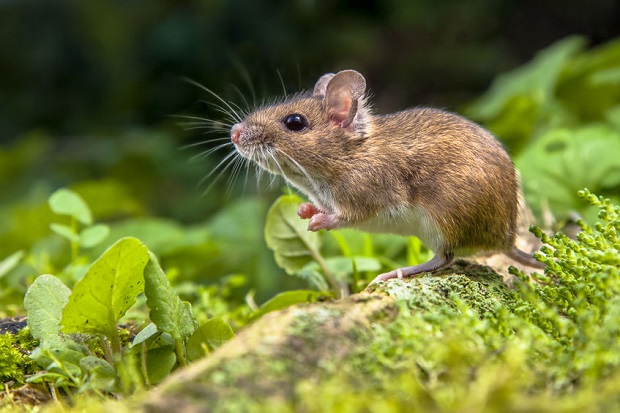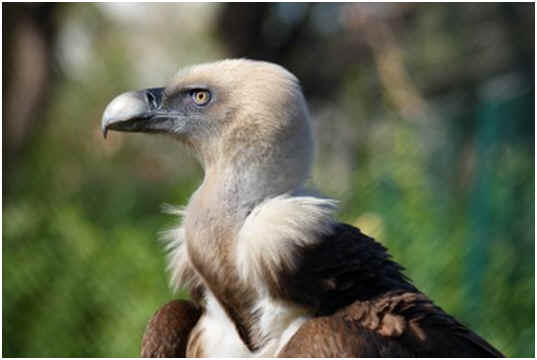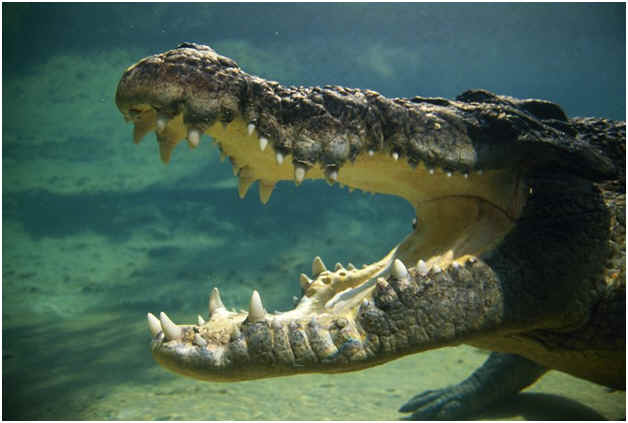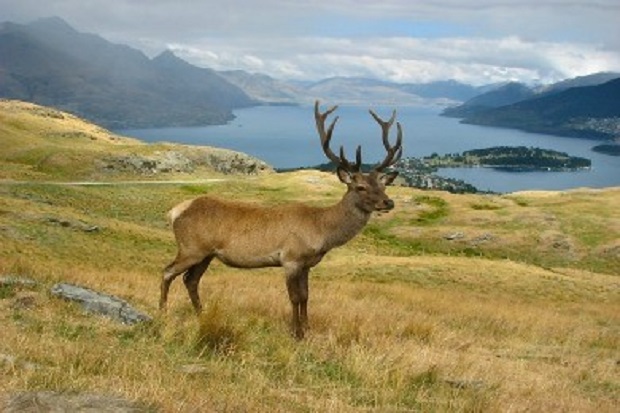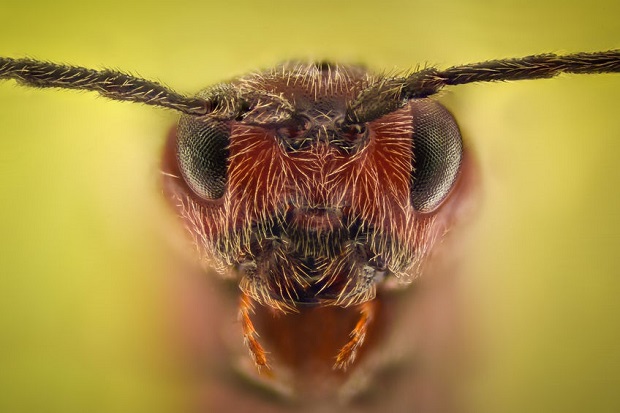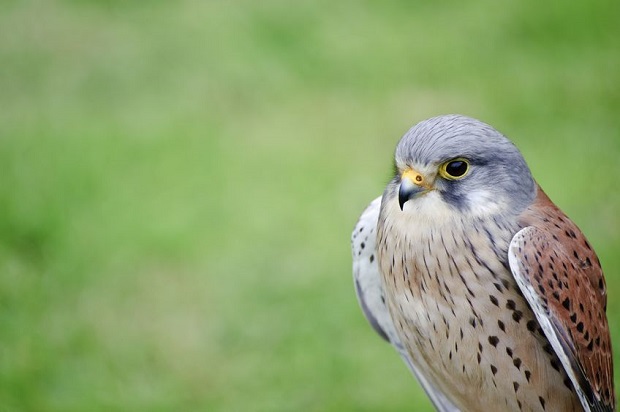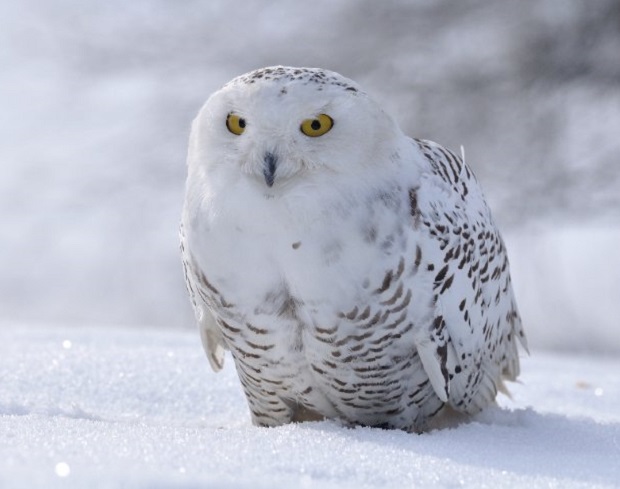
Discover answers to the most popular questions about snowy owls, including classification, identification, habitat and range, hunting and diet, behavior, and conservation status.
Classification
How Are Snowy Owls Classified?
Phylum: Chordata
Subphylum: Vertebrata
Class: Aves
Order: Strigiformes
Family: Strigidae
Genus: Nyctea
Species: Nyctea scandiaca
Identification
What Does a Snowy Owl Look Like?
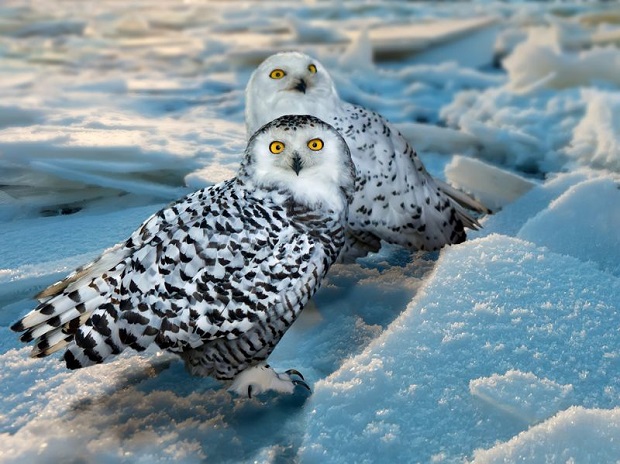
Perfect camouflage for its Arctic surroundings, snowy owls are pristine white with varying amounts of black and brown markings. The snowy owl is the only owl species in which the male and the females are easily distinguishable. The females are more heavily marked than the males, which grow whiter with age. Younger birds tend to be darker and have more markings. Unlike other owls, the legs and feet are covered in white feathers for warmth, making the bird look stockier than other owl species. [See image above]
How Big Is a Snowy Owl?
On average, the Snowy Owl measures between 20-28 inches and weighs 3.5-6.5 pounds, making it North America’s heaviest owl species. Its wingspan is 49-57 inches. [Cornell]
[The heaviest owl species in the world is the Eurasian Eagle Owl weighing upwards of 9.25 pounds!] [UM]
Habitat and Range
Where Do Snowy Owls Make Their Home?
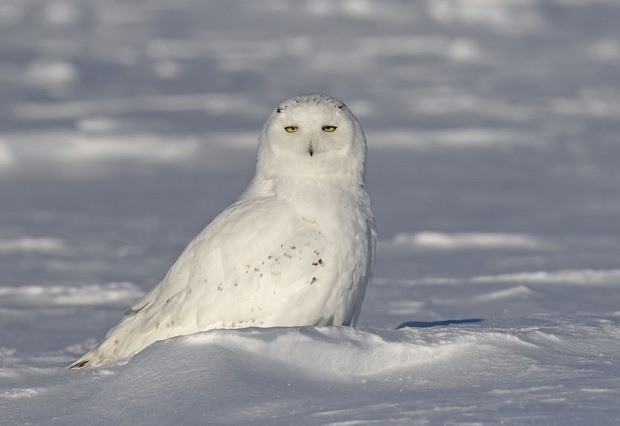
The Snowy owl prefers treeless wide-open spaces making the Arctic tundra the perfect habitat. It will choose a spot on the tundra that is slightly elevated and will build its nest right on the ground by scratching away at the surface to create a shallow hollow.
Those years that it does migrate south, it will choose open spaces such as grassy plains or vast expanses of frozen water. It has also been sighted in railroad yards and airports.
Are Snowy Owls Only Found in the United States?
Most snowy owls live in the Arctic, including Greenland, Scandinavia, Russia, and Canada, and regions north of Alaska’s Brooks Range, an extension of the Rocky Mountains that stretches west to east across northern Alaska and into Canada’s Yukon Territory. They will venture further south into Canada and the northern United States when food is scarce. [USFWS]
Hunting and Diet
What Do Snowy Owls Eat?
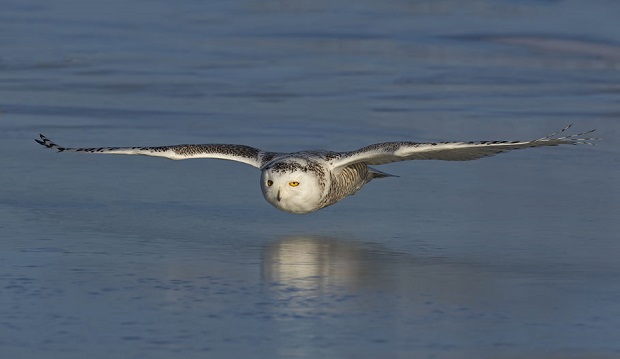
Like all birds of prey, the Snowy Owl feeds mainly on small mammals, the lemming is the meal of choice. It will supplement its diet with rodents, rabbits, and fish when unavailable. Being one of the most agile owls, it can also catch smaller birds on the fly. The owl has a voracious appetite and can eat 3-5 lemmings daily. [DOW]
How Do Snowy Owls Catch Their Prey?
The snowy owl hunts in various ways, but patiently perching is a favorite. It will sit perched in complete stillness, waiting for prey to appear. It will perch anywhere with a good view, frequently right on the ground. John James Audubon recorded a sighting of a snowy owl lying completely prone on the ground, head and all, as if it were sleeping, waiting patiently beside an ice hole. The instant a fish came close to the surface, the owl thrust out his foot, grabbed it with its talon, and pulled it out of the water. [Audubon]
As one of the most agile owl species, it can also catch birds on the fly.
Like all owls, it has keen eyesight and vision. When it detects prey, it will glide low to the ground in pursuit. Its silent flight makes it inconspicuous to the prey allowing it to snatch it up with its strong talons quickly. In the case of a larger animal, such as a rabbit, the owl will swoop down and grab the animal’s back with one talon while dragging the other talon into the snow. It will then fly backward until it has exhausted the animal. [Smithsonian]
Do Snowy Owls Have Predators?
At the top of the food chain, snowy owls have few predators. Both male and female defend the nest vehemently against would-be predators, ranging from arctic foxes and wolves to other birds.
Snowy owls are fierce fighters and have been known to defend their nest adamantly against would-be predators digging sharp talons into anything that dare approach. If a would-be predator is not deterred, this crafty creature will feign injury by dragging its wing on the ground, luring the attacker away from the nest. Once far enough away, it will fly back. [TZ]
Snowy owls are such good defenders that other birds take advantage of this fact and nest in close proximity for protection. A 1993 study of snow geese demonstrated the impact of nesting in close proximity to a Snowy Owl and its impact on arctic fox predation. The researchers discovered 236 geese nests situated within 1.6 sq. miles of a single Snowy Owl nest. (Some as close as 27.3 yards) The researchers noted that nesting success was 90% for that year. In contrast, the Snowy Owl was not present the following year, and the nesting success rate dropped to 23%. [Tremblay]
Behavior
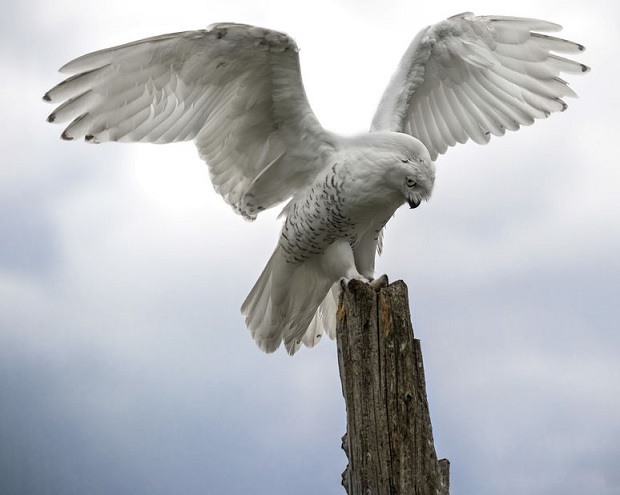
Are Snowy Owls Nocturnal?
Considering the climate in which the Snowy Owl inhabits, it is difficult to label it strictly nocturnal or strictly diurnal. Unless there is a food shortage, the Snowy Owl does not migrate seasonally from its Arctic habitat. The Arctic is unique in that it experiences six months of only sunlight and six months of only darkness from October through March. This means that the Snowy Owl that remains in the Arctic during both seasons must hunt in both the daylight and in the darkness.
In most accounts of the Snowy Owl in areas that share both light and darkness, the owl seems to be more active during the daylight hours.
Do Snowy Owls Migrate?
Snowy Owls are not annual migratory birds though a few will fly south to regions of Canada and the northern United States. Though inconsistent, massive migration, known as an ‘irruption,’ will occur when scarce food supplies are major events for bird lovers. In 2011, for example, several US Fish and Wildlife Service Bulletins reported sightings of the owl in Washington, North Dakota, Minnesota, Michigan, Maine, Vermont, New York, Illinois, Massachusetts, Connecticut, and as far south as Missouri and Kansas. [USFWS]
During these snowy owl invasions into the United States, the birds arrive in mid-November and depart for home in mid-March. [Heintzelman]
Conservation Status
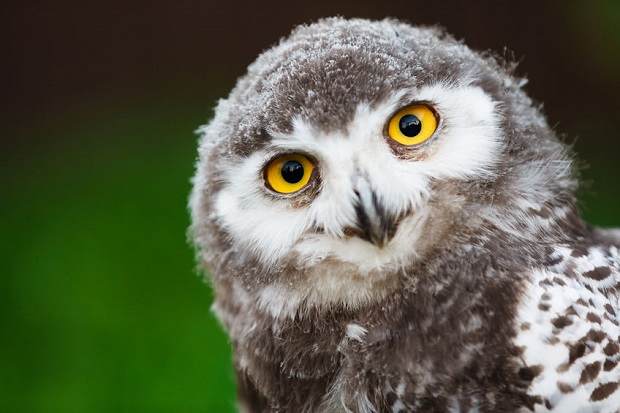
Are Snowy Owls Endangered?
As of December 2013, Snowy Owls in the United States are currently not protected by the Endangered Species Act of 1973 (ESA). The US Fish and Wildlife Service regulates the ESA with cooperation from the National Marines Fisheries Service. [FWS]
(Current owls on the ESA endangered species list include the Anjouan scops owl, Morden’s owlet, giant scops owl, Madagascar red owl, Mexican spotted owl, northern spotted owl, and the Seychelles scops owl)
Resources
University of Michigan Animal Diversity Web
Eurasian Eagle Owl
http://animaldiversity.ummz.umich.edu/accounts/Bubo_bubo/
Cornell University Lab of Ornithology
Snowy Owls
http://www.allaboutbirds.org/guide/snowy_owl/id
US Fish and Wildlife Service
Bulletin: Snowy Owls Flying South
http://www.fws.gov/pacific/highlights_archive/Feature.cfm?id=13856
Heintzelman, Donald S.
Hawks and Owls of Eastern North America
New Brunswick, N.J.: Rutgers University Press, 2004. Print.
Defenders of Wildlife
Fact Sheet Snowy Owl
http://www.defenders.org/snowy-owl/basic-fact
Toronto Zoo
Snowy Owl
http://www.torontozoo.com/ExploretheZoo/AnimalDetails.asp?pg=719
Audubon, John James
The Birds of North America, Volume 1
New York, J.J.Audubon, 1840. Print.
Smithsonian Museum of Natural History Arctic Studies Center
Snowy Owl
http://www.mnh.si.edu/arctic/html/owl.html
Tremblay, J; The Wilson Bulletin
Factors Affecting Nesting Success in Greater Snow Geese: Effects of Habitat and Association with Snowy Owls
1997; Volume: 109; No: 3; pp: 449-461
http://www.jstor.org/discover/10.2307/4163840?uid=3739696&uid=2&uid=4&uid=3739256&sid=21103058861517
National Audubon Society
Audubon’s WatchList 2007 in taxonomic order by geographic region
http://birds.audubon.org/sites/default/files/documents/watchlist2007_printable_list_populations.pdf
Florida State University Cooperative Extension Service
Snowy Owl: Tyto Alba
http://edis.ifas.ufl.edu/uw216
US Fish and Wildlife Service
Listing a Species as Threatened or Endangered
http://www.fws.gov/endangered/esa-library/pdf/listing.pdf
http://www.fws.gov/endangered/species/us-species.html
